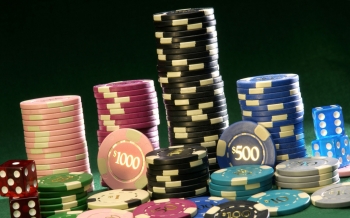The Relation Between Your Stack-size and the Optimal Playing Style

Tournament players have long known that the amount of chips they have in their stacks dictates the optimal course of action in every hand they play. The same is true for cash games: what may be an excellent idea with a large stack backing you up, is tomfoolery on a short-stack. The general truth is that large stacks will give you several options and therefore greater freedom at the tables, while shorter stacks will limit your options. Under certain circumstances, your options may be limited to one, and when that happens, you’re right to feel like you’re being forced into a move you’re not at all comfortable with.
In cash games, players can add to their stacks whenever they want. While the maximum size of buy-in is always limited in order to prevent those of more generous material means from tilting the game their way by simply throwing money at it, players are free to replenish their stacks every time they lose a pot. Good players always keep their stack-size close to maximum for a couple of simple reasons: first of all, a large stack offers freedom at the table and in order to be truly creative and to make the most of his/her skills, a player needs that freedom.
Because stacks are always weapons at the table too, a deep stack is like a big stick: it commands respect and it allows the bearer to milk his/her monster hand to the maximum.
In tournaments, things are different. Players aren’t in control of the size of their stacks and the chips take on an entirely different meaning. Not only are they the big stick one wields with more or less skill, they’re also the player’s life-blood. Once the stack runs dry, the players’ tournament life is over.
In the beginning of tournaments, the stacks are about as deep as they’ll get. This is when players have the most options. They can (and should) play a much wider selection of starting hands, because of the favorable pot equity involved (the blinds are small compared to the size of the player stacks), and because the implied odds are decent too.
Normal stacks are around the 100 BB mark. This is what the average tournament buy-in looks like. Players with normal stacks have plenty of freedom still, but they have to keep an eye on starting hand selection. Because this is what is generally considered a healthy stack, most strategy articles are about play while normally stacked.
A stack with 30-50BBs in it is a medium stack. Starting hand selection becomes much more important here. Small stacks contain about 15-35 BBs. Playing with a short-stack is much more difficult because of the mounting pressure, but it doesn’t mean that it’s necessarily less advantageous. There are professional players out there who consider themselves masters of the short-stack. These players thrive under pressure, therefore short-stack status suits them just fine.
Tiny stacks (less than 15 BBs big) no longer require any sort of strategy. One needs to isolate an opponent and shove all-in on just about any two cards he/she picks up. The pot odds will justify the move, as desperate as it may seem.
Regardless of whether or not you consider yourself the master of the short-stack, you should always sign up for a rakeback deal (RMB). Poker props get exceptionally high rake rebate percentages.




